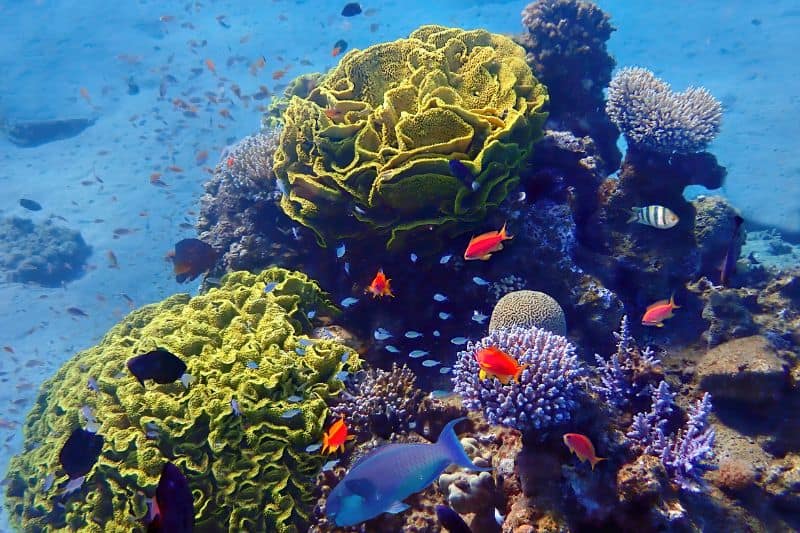Ecosystem refers to the collection of living things, their physical surroundings, and all their relationships within a specific area. Humans all exist in an ecosystem; this ecosystem needs to be managed.
Keystone species play a crucial role in the modulation and management of an ecosystem. Learning about them and their effect on the ecosystem will help you understand why these species are essential.
This article will examine keystone species, their importance, and their effect on the ecosystem. Now, let us dive into the world of keystone species and look at what they are.
What are Keystone Species?
The naturalist Robert T. Paine first proposed the idea of a “keystone species” in 1969. A keystone species is a specific species that, concerning its abundance, has an outsized impact on its natural habitat.
By influencing several other organisms in an environment and determining the kinds and quantities of other species in the community, keystone species serve a crucial role in sustaining the organization of an ecological community.
In the absence of keystone species, the ecosystem will either no longer exist or will change significantly. Apex predators include some keystone species, like the wolf. Paine devised the theory to justify his observations and tests on the interactions between mussels, starfish, and other marine invertebrates in the aquatic environment.
He cleared the starfish from a spot and recorded how the ecology was affected. According to Paine, a keystone species is one that, in relation to its abundance, has a disproportionately significant impact on the environment.
A traditional keystone species inhibits the extinction of dominant plant species by a particular herbivorous species. Keystone hunters may be even less numerous and still be successful if prey populations are low.
However, without predators, the population of herbivorous prey would soar, eradicating the dominating plants and fundamentally altering the ecology. Each example presents a different circumstance, but the basic tenet is the same.
Through a series of interactions, a non-abundant species does have an outsized influence on ecosystem processes. By barring a particular species from dominating a community, keystone predators may improve its biodiversity.
They can significantly impact the balance of species in a specific ecosystem. Alteration in a keystone predator’s population size or its introduction can have a significant cascade effect on the stability of several other groups in the ecosystem.
Types of Keystone Species
Keystone species significantly impact the other animals and plants that constitute an ecosystem, which is essential for its general function and structure. There are three types of keystone species; mutualists, ecosystem engineers, and predators.
Predators
Predators are the first class of keystone species. According to National Geographic, they are an essential component of ecosystems and aid in “controlling the number of prey species.”
Gray wolves in Yellowstone National Park are among the most popular keystone species. Due to years of overhunting, their community was completely wiped out in the 1920s. The entire food web is impacted by this, in turn.
The population of the prey animals exploded in their absence. Aspen trees and other vegetation types suffered a severe drop, harming several ecosystem components. However, in 1995 Jasper National Park’s gray wolves were released once more.
They started what is referred to as a “trophic cascade,” but it took some time. This cascading impact, still being felt today, expanded flora, revived rivers, and restored the rodent population.
Examples of predators are the gray wolf and the Yellowstone apex predator, sea otters and kelp forests, and sea stars.
Mutualist
Organisms known as “keystone mutualists” engage in mutually beneficial interactions whose extinction would significantly affect the ecosystem.
For instance, during a specific time of the year in Western Australia’s Avon Wheatbelt, Banksia prionotes serve as the only supply of syrup for honeyeaters, which are crucial to the pollination of many different plant species.
Therefore, the honeyeater population would likely collapse due to the extinction of just one species of tree, significantly affecting the ecosystem as a whole.
Another illustration is the distribution of various tree seeds by frugivores like the cassowary. Some seeds need to pass through a cassowary to germinate.
Due to the mutually beneficial nature of their relationships with plants, bees are an excellent example of this kind of keystone. For instance, they promote plant growth and fertilization potential by gathering pollen and nectar, their primary food sources.
Ecosystem Engineer
The prairie dog is an ecosystem engineer in North America. Mountain seabirds and digging owls have a place to nest in prairie dog tunnels. Prairie dog tunnel networks can alter the soil’s structure by boosting aeration and countering soil compaction that might arise from cattle grazing.
They also assist in channeling precipitation into the surface water to reduce runoff and erosion. To eliminate potential predator cover, prairie dogs often prune the plants around their colonies.
A beaver is a recognized keystone species and ecosystem engineer. It changes the stream in its area into a pond or a marsh. To build their dams, beavers first modify the riparian zone’s boundaries by removing older trees.
As a result, newer trees might replace the older ones—the riparian area where beaver dams are built changes. The larger herbivores, particularly the elephants, influence their habitat in the African savanna.
Peccaries create and maintain wallows in the Amazon river basin, which a range of animals use. Elephants uproot trees, allowing grass to grow and establishing habitats for various small animal species. A large portion of the grassland would become woods without these animals.

Why are Keystone Species Important?
Keystone species can only preserve the local species variety. Without keystone predators, a prey species will flourish and drive other communities to extinction, as happened to the Tatoosh Islands’ mussels.
Different organisms can occupy the spaces they create. For instance, all plant species that rely on Savannah’s elephants for seed dispersion would perish if they were extinct.
Similar to how populations of elephants would severely decline without them, zebra populations would plummet due to a lack of available water sources.
Keystone species that serve as food resources, like figs, would affect the number of animals that eat them. Again, it would result in fierce competition among species in that habitat and possibly even their extinction.
Due to their potential to directly or indirectly impact other organisms, their existence is crucial for the ecosystem. They directly contribute to keeping a particular kind and quantity of species within the ecosystem.
What Effect do Keystones Have on an Ecosystem?
Keystone impacts the ecosystems surrounding them and is so named because they are the focal point of an arch. The health of these animals has a direct impact on the health of particular ecosystems.
Keystone species significantly impact an ecosystem by regulating a crucial element of resources, growth, territory, or food needed for a proper existence.
They influence many other organisms and are essential to sustaining the ecological community’s structure. They could be vegetation or an animal essential to the ecosystem’s work.
Keystone Species Examples
A keystone species is any plant, animal, bacteria, or fungus that alters the ecosystem in a significant manner. Some examples of keystone species are the sea otter, sea star, large mammalian predators, ocean, tundra, desert, and boreal forest.
Sea Otter
Since it eats sea urchins and stops the population of sea urchins from destroying kelp forests, the sea otter is a keystone species. Kelp forests are essential to the survival of different organisms in nearshore settings.
In the exclusion of sea otters, sea urchins feed on nearby kelp forests, harming these shoreline ecosystems. However, if sea otters are available, their consumption of sea urchins reduces their number to tiny animals confined to safe crevices.
As a result, by reducing the population of local sea urchins, the sea otter helps to conserve the kelp forests.
Sea Star
Another well-known keystone species is the sea star, which feeds on mussels in places without any other predators. Whenever the sea star is eliminated from an ecosystem, the number of mussels frequently increases unchecked. It harms the resources that are accessible to other organisms in the ecosystem.
Ocean
Sharks are essential top-of-the-food-chain feeders that have an impact on marine habitats across the world. By feeding on the sickest, frailest, and most sluggish creatures, they control the spread of disease and the populations of their prey.
They also impact local habitat, for instance, by eradicating grouper, a predatory fish, from Caribbean reef ecosystems.
The presence of sharks promotes the survival of colonies of herbivorous fish lower on the food chain, which consumes algae that might otherwise harm coral reefs.
Tundra
Little plant and animal species can thrive in the Arctic tundra, which covers the northern portion of the Northern Hemisphere and is frigid, treeless, and frequently snowy.
One of its main prey animals is the lemming, a small rodent with a large and cyclic colony. Keystone species like lemmings provide food for predators like weasels, arctic foxes, and snowy owls.
They impact the occurrence, condition, and makeup of the plants they consume because they are herbivores.
Conclusion
Ecologists can better understand the fragile, complex web of interactions that supports any particular ecosystem by using the notion of the keystone species.
Additionally, it supports the case made by conservationists for reducing human influences to safeguard species and the intricate ecosystems they support. As humans, the absence of keystone species will affect us.






